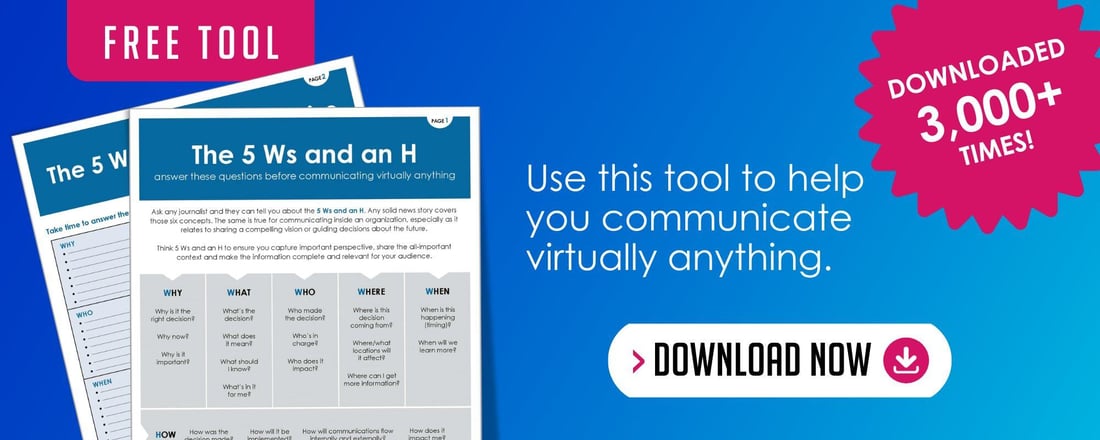
In advertising and communications, effective frequency is the number of times a person must be exposed to a message before a response is made. Theories have ranged from three to twenty times, leading to countless spirited discussions amongst academics and practitioners alike looking to identify the magic number.
Whatever the answer, and it varies by person, the fact remains that recipients of a message can only retain a limited amount of information per exposure, and it often takes someone hearing a message multiple times to transition that person from awareness to understanding, and finally, to action.
That’s why development of clear, concise, credible, and compelling messages is critical to effective communications. Stopping there, however, is like ending a sentence without a period…you must be consistent with your messages to effectively close the loop.
Follow the Five Cs for Successful Messaging
- Clear: Easy to understand and remember, no matter the audience.
- Concise: Direct and to the point without unnecessary insertions that may distract audiences from the main points.
- Credible: Believable in that the messages are backed by proof points and incorporate supporting details to strengthen the key points.
- Compelling: Catches your audiences’ attention and inspires them to take applicable action.
- Consistent: Repeatable and flexible enough to be incorporated into varying communications channels again and again.
To be clear, message creation is not the same as a script. There is no replacement for thoughtful, strategic core messages that are customized to your individual audiences. You can have the best design or visual effects, perfect timing, and spot-on delivery, but none of that matters if your messages aren’t created in a way that your audiences can hear and digest them. For example, sometimes we share too much information, or information that’s hard to digest, and therefore causes confusion and sometimes, even anxiety. Once you have messages that meet an audience’s mindset, find opportunities to weave your messages into different communications so employees are consistently hearing your key points in slightly different ways on a recurring basis.
So now you know the Five Cs, but what next? Follow these steps for developing your core messages and you’ll have provided yourself and your audience with the foundational building blocks for successful communications.
How to Develop Your Core Messages
STEP 1: State your business goals. What are the biggest things your organization needs to accomplish? What goals are you working to achieve?
STEP 2: State your communications objective. How is communication uniquely qualified to help achieve the business goals? In what ways?
STEP 3: Define your audience(s). To help you think through how best to communicate with different groups of employees, it’s important to define who they are. List different audience groups and consider their mindset on the topic you need to communicate. What do they know? Don’t know? What are their perceptions on the topic? Then, consider what you want them to think, feel, and do as a result of your communication. That will help you focus and, when necessary, adapt your message for different audience segments.
STEP 4: Define three core messages. What are the three most important things you need to communicate to meet your objective? Write them as simple statements – remember to keep it clear and concise. You want someone to walk away from a conversation with you and be able to share your main points with someone else.
Think about the following questions as you develop your messages:
- What – What’s happening?
- Why – Why is this critical?
- Who – Who is this impacting?
- Where – Where is this decision coming from?
- When – When is the change happening?
- How – How will this happen?
STEP 5: Develop “proof points” for each message. Look for facts and figures that back up your point. These are the details that support your message. Data or linking to current events make your message credible.
STEP 6: Incorporate stories and examples to make it memorable. Is there an anecdote you can share that brings your message to life? An example? How can you make your message relatable and compelling to people so what you say sticks with them?
Where are you on having a core set of messages that you integrate into all your communications?
—David Grossman
Download this free two-page tool – The 5 Ws and H – to ensure you're capturing important perspective, sharing the all-important context, and making it relevant for your audience.


Comments on this post